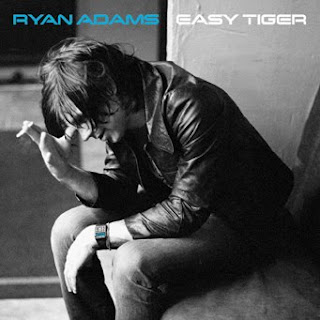Neil Young
 Another of Neil Young's album covers which is of stark contrast to that of the one above which is bright and cheerful, this album, After the Gold Rush released in 1970 is very bleak with a solarised picture of Neil Young passing an old woman in the street. After listening to this album I have realised why this album merits this dark album cover as the songs enlist a sorrowful tone with a hint of despairing love this album cover really does reflect the saying "life is hard and then you die".
Another of Neil Young's album covers which is of stark contrast to that of the one above which is bright and cheerful, this album, After the Gold Rush released in 1970 is very bleak with a solarised picture of Neil Young passing an old woman in the street. After listening to this album I have realised why this album merits this dark album cover as the songs enlist a sorrowful tone with a hint of despairing love this album cover really does reflect the saying "life is hard and then you die".At least we cant say that Neil Young is predictable, from the album above to the one below!
 The Band
The Band The Band's album inventively named The Band (released is very plain with a picture taken of them at Woodstock. The browny green border colour doesn't really do much for the appeal of this album, but the photo gets their image out there and has the opportunity to become an iconic image like those of The Beatles, queen etc. which show the band in their glory!
The Band's album inventively named The Band (released is very plain with a picture taken of them at Woodstock. The browny green border colour doesn't really do much for the appeal of this album, but the photo gets their image out there and has the opportunity to become an iconic image like those of The Beatles, queen etc. which show the band in their glory!Moving on to a more interesting album cover from another artist inspiring The New York Fund.
This fuzzy image reflecting the rush of modern day life (hence the title of the album). At this point in Dylan's career he is very well known and thus there is no need for him to put his own image on his album cover however his earlier albums have photos of himself on the front to get his image well known and recognisable.
 Ryan Adams
Ryan Adams Similarly, this image on Bryan Adams album reflects the title of the album; 'Heartbreaker' as this photo has a depressed, languid feeling which also reflects the type of music he produces. The cigarette that is in both of his albums (above and below) shows a state of solitary solemn contemplation and adds to the relaxed tone of the images. The cover above has a black band across the top to make the text stand out with his name in white conveying a sense of innocence juxtaposed against red text the says 'Heartbreaker' shows perhaps that there are two different sides to Ryan Adams' music. and due to the fact that his name is in a different font to that of the title adds more import to his name which would make the audience recognise the artist as well as his image.
Similarly, this image on Bryan Adams album reflects the title of the album; 'Heartbreaker' as this photo has a depressed, languid feeling which also reflects the type of music he produces. The cigarette that is in both of his albums (above and below) shows a state of solitary solemn contemplation and adds to the relaxed tone of the images. The cover above has a black band across the top to make the text stand out with his name in white conveying a sense of innocence juxtaposed against red text the says 'Heartbreaker' shows perhaps that there are two different sides to Ryan Adams' music. and due to the fact that his name is in a different font to that of the title adds more import to his name which would make the audience recognise the artist as well as his image.The album cover below is in grey scale which is a commonly used technique that creates a monochromatic image that doesn't distract any attention yet again from the coloured forms on an image in this case his name which stands out in electric blue and would draw the audience's attention to it in a shop!


These two album covers are extremely different from those I have looked at above. The first is very interesting; it is from a compilation album consisting of alternative versions of their songs which was released in 1995. The front cover is easily recognisable and memorable with red writing which stands out against the perverse image and perhaps brings to mind the image of blood in context with the cruel image in which someone seems to be enjoying having a bag over their head with a shouting face on the front. This front cover is strange in the fact that it does not seem to relate to anything, and the album title of Deep Fried Fanclub also does not seem to relate. This shows how album covers don't have to bear relevance to the material or can have an agenda of their own.
Excellent research Helen and reflecting how artists utilise the art deco style which was prominent in Russian revolutionary propaganda posters; also note the Van Gogh influence in Neil Young's album cover.
ReplyDeleteReflecting consistent engagement with research and planning.